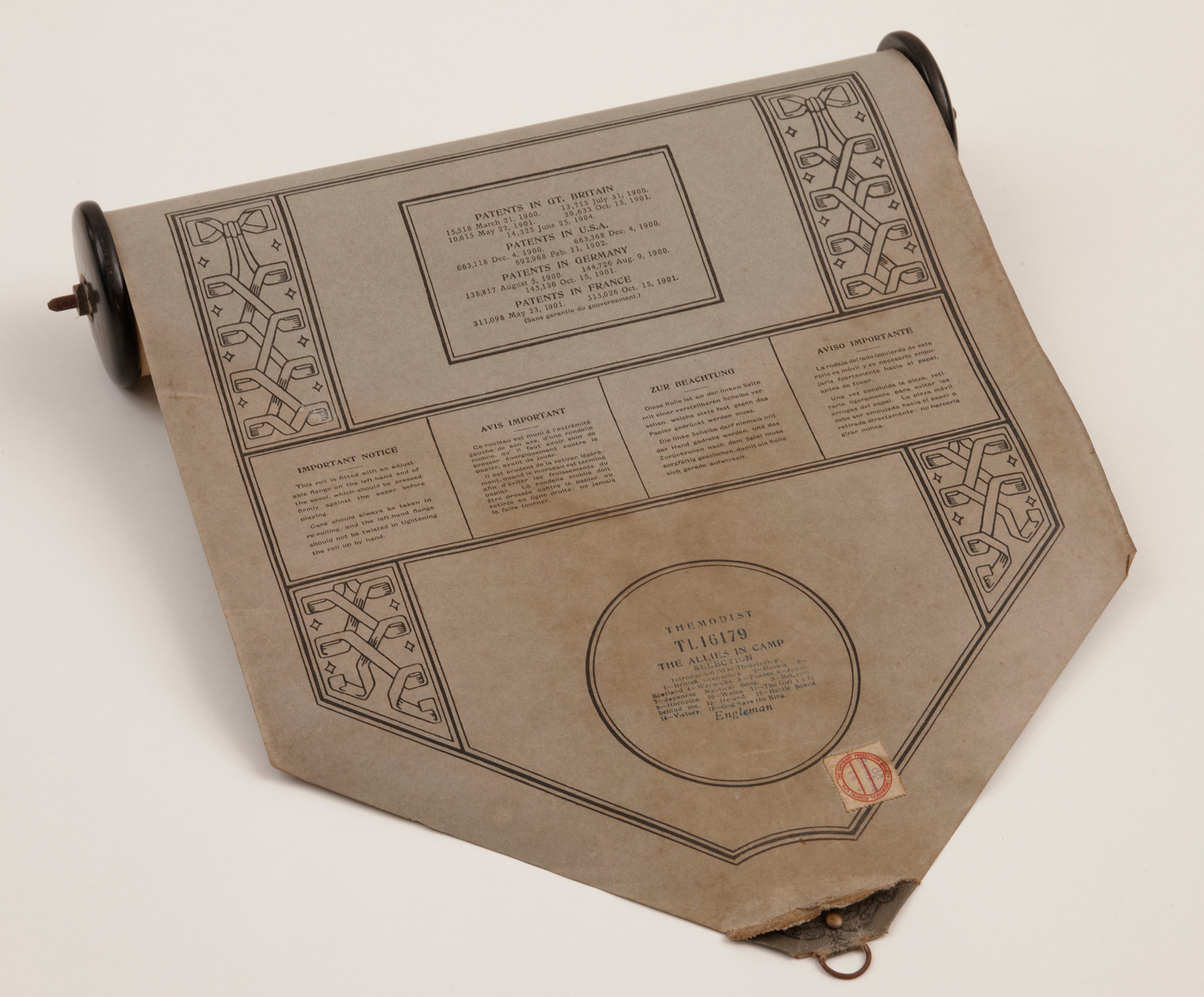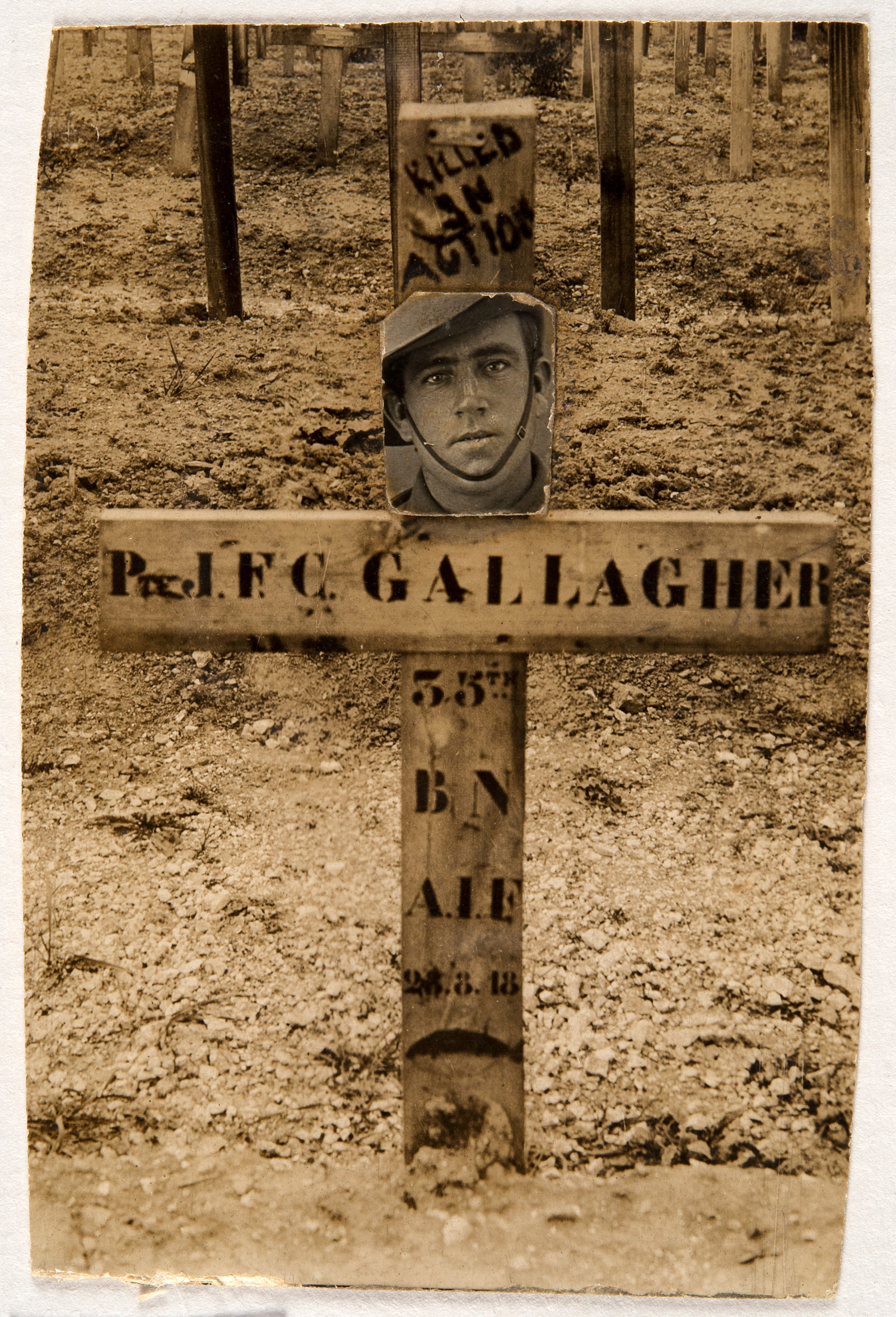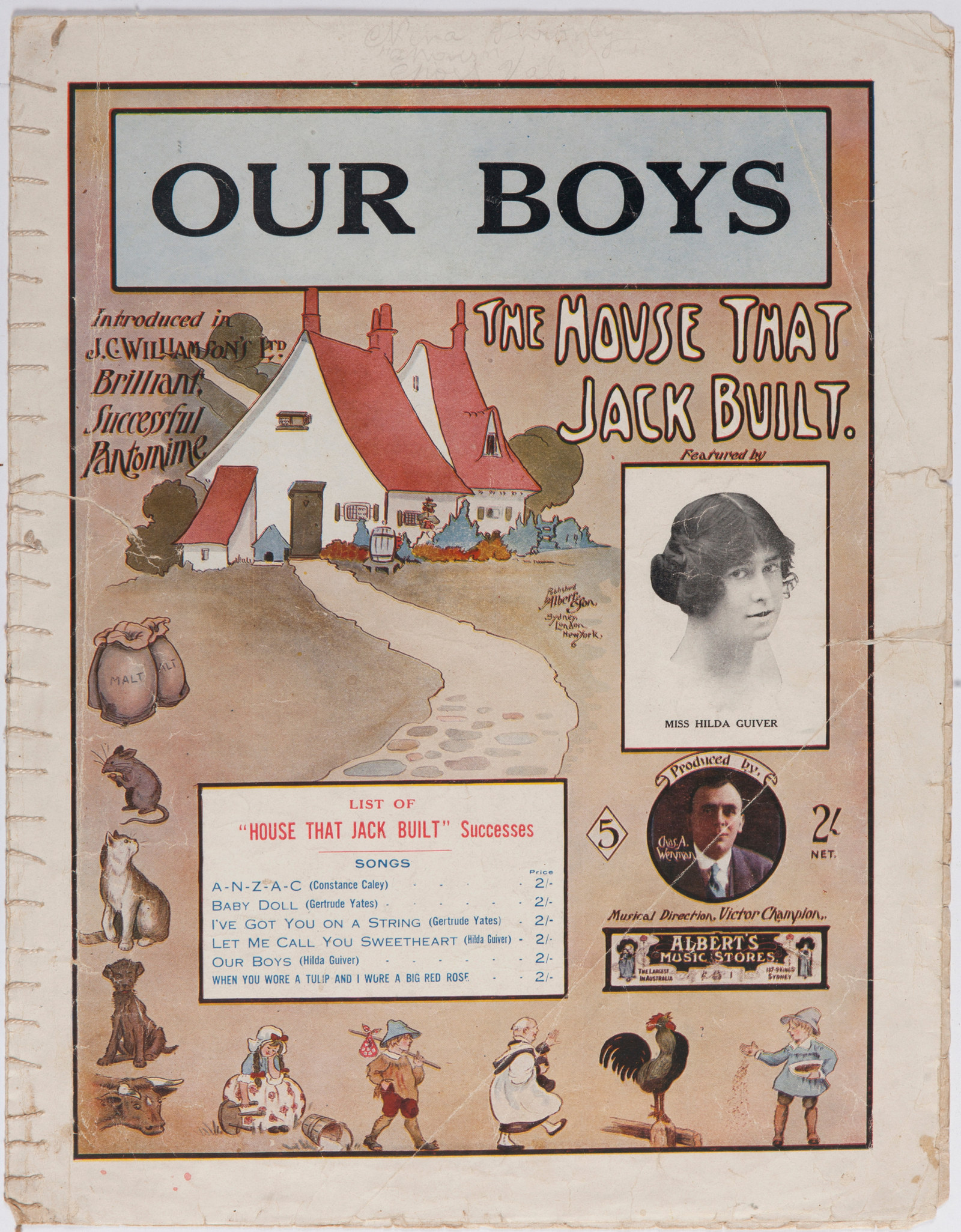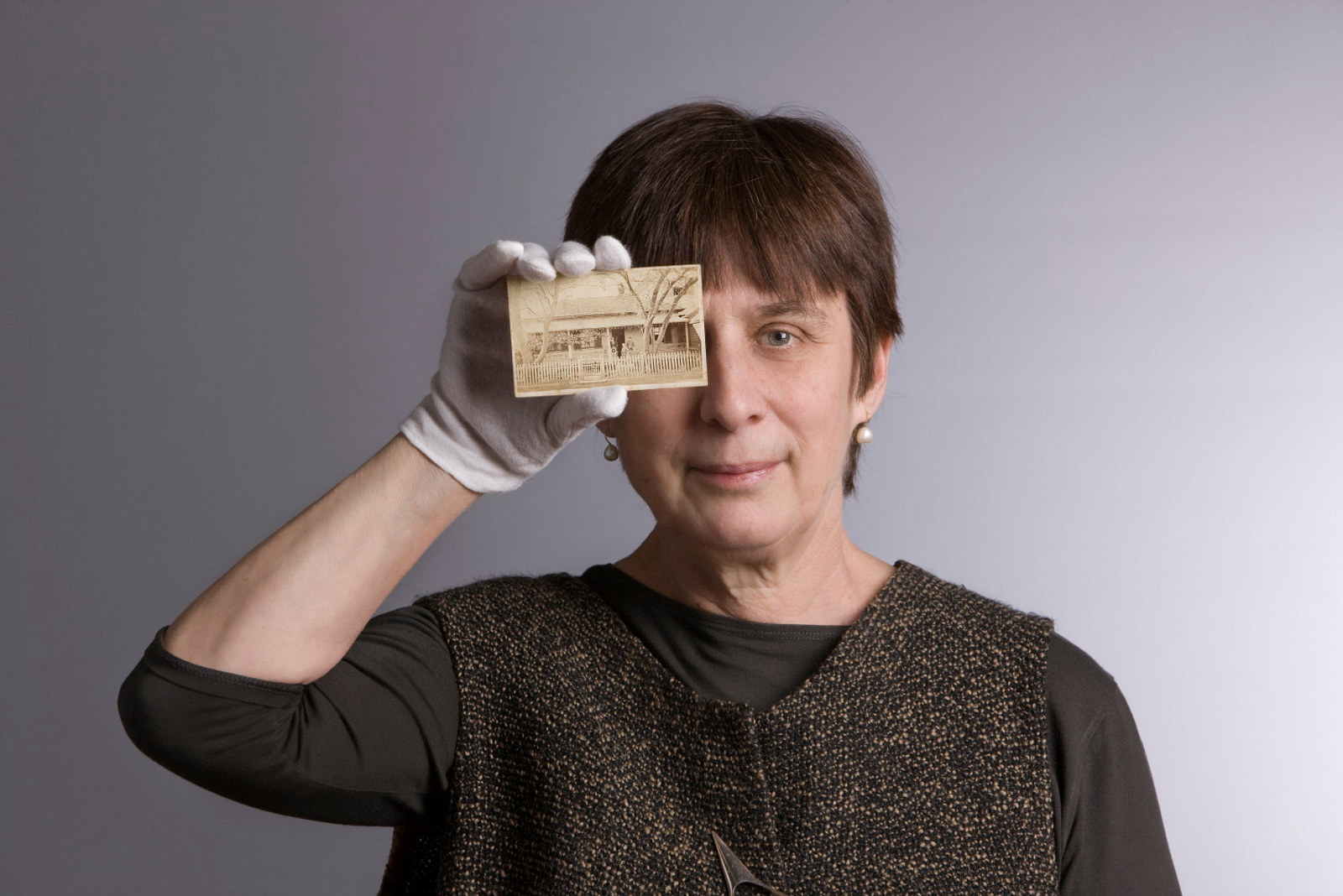Red Cross Convalescent Home at Moss Vale
‘The Mill’, an old Throsby family property at Moss Vale in the Southern Highlands of NSW, opened as a Red Cross convalescent home in late January 1916.
It had been a boyhood home of Major General Sir William Throsby Bridges, who died at Gallipoli in May 1915. The house was lent to the Red Cross for the duration of the war by his nephew Mr Frank Throsby, of Throsby Park, Moss Vale. Frank and his wife, Jeanie, undertook the work of getting ‘The Mill’ ready for occupation, securing the voluntary services of painters and plumbers and even a laundress, as well as soliciting donations of a bath heater, a meat safe, a gramophone and other comforts.
The work of the home was carried out by the local Moss Vale Voluntary Aid Detachment, and this illuminated address, painted and lettered in watercolour and poster paint with a representation of a wounded soldier applied as collage and overpainted, was probably the work of Miss Freda Dunnage, one of the voluntary aids. The figure of the soldier had been clipped from a postcard that originally carried the words: ‘He’ll be home soon, sick, and wounded. Give him a helping hand’.
The address was presented to Frank Throsby at a celebratory evening on 9 March 1916, not long after the home opened with its first intake of convalescents. The address was given to Mr Throsby on behalf of the returned soldiers by Private Rio Grant Morgan, who had served with the Australian Naval and Military Expeditionary Force to Rabaul in New Guinea and had been invalided home with malaria. Morgan’s was the first of 22 names on the address, all early casualties of the war, and many of them wounded in action at Gallipoli. Private Harley Cohen of the 4th Battalion lost an eye at the battle of Lone Pine. He was about to become a celebrity with the publication of ‘They were there, there, there’, a Gallipoli song written in the trenches and later set to music. Later in 1916 he joined the Anzac Concert Party, a group of returned wounded soldiers who toured NSW under the auspices of the Returned Soldiers’ League. Cohen was declared unfit for further military service, but at least three of his fellow convalescents from ‘The Mill’ returned to duty or re-enlisted after convalescence and went back to the front.
Published on
More

On This Day
17 Dec 1915 - 'Waratah' recruitment march
On 17 December 1915 the "Waratah" recruitment march arrived in Sydney

WW1
The Allies in camp music roll
Rouse Hill house boasts a fine pianola, a player piano, which came into the house just a few years before the outbreak of World War I

WW1
Frank Gallagher’s grave markers
Late in the afternoon on 23 August 1918, Private John Francis Cecil Gallagher, known as Frank, was killed by shellfire at 23 years of age

WW1
Our Boys: patriotic sheet music
The song, written by a young Sydney woman named Evelyn Greig, was one of more than 500 patriotic songs published in Australia during World War I
